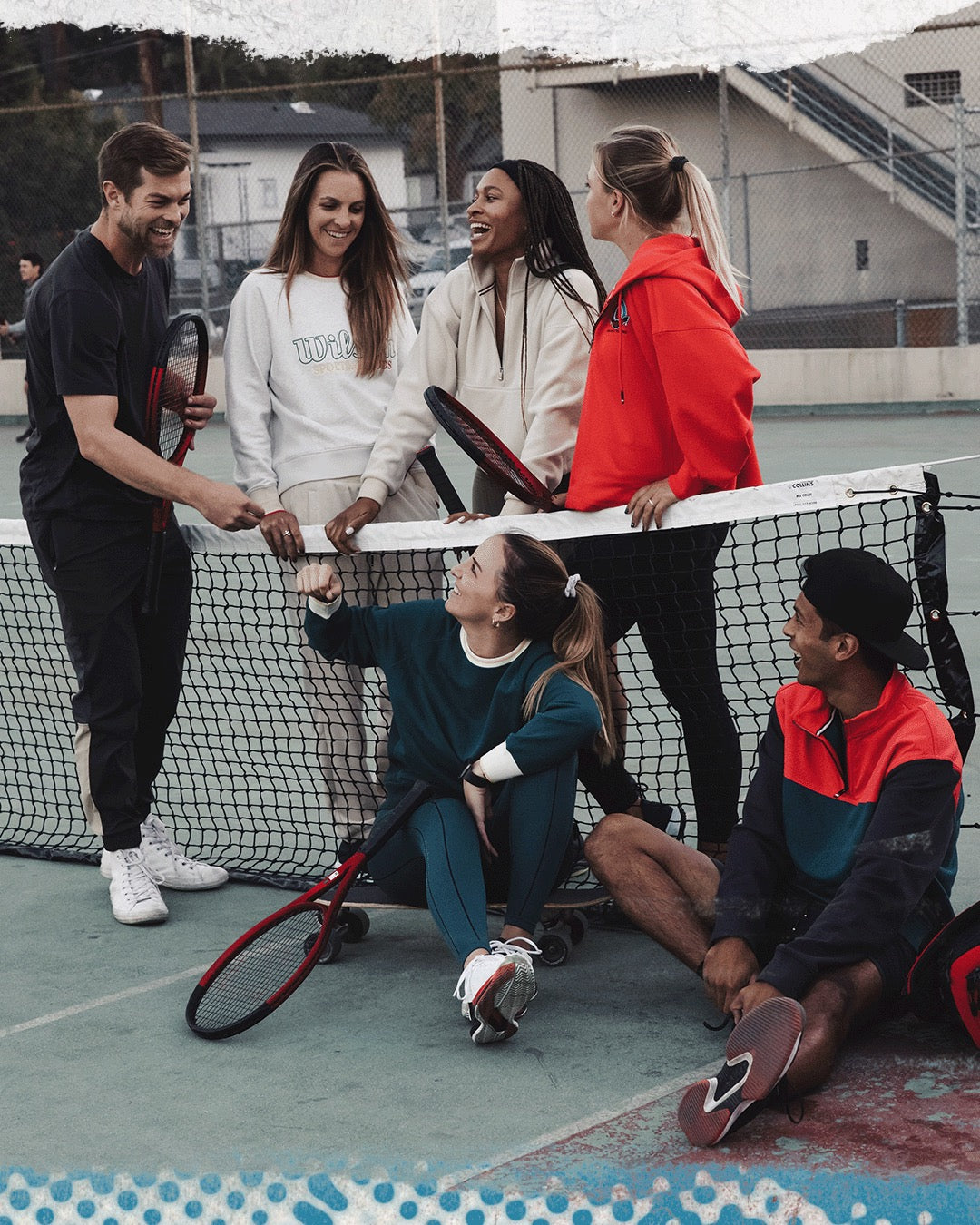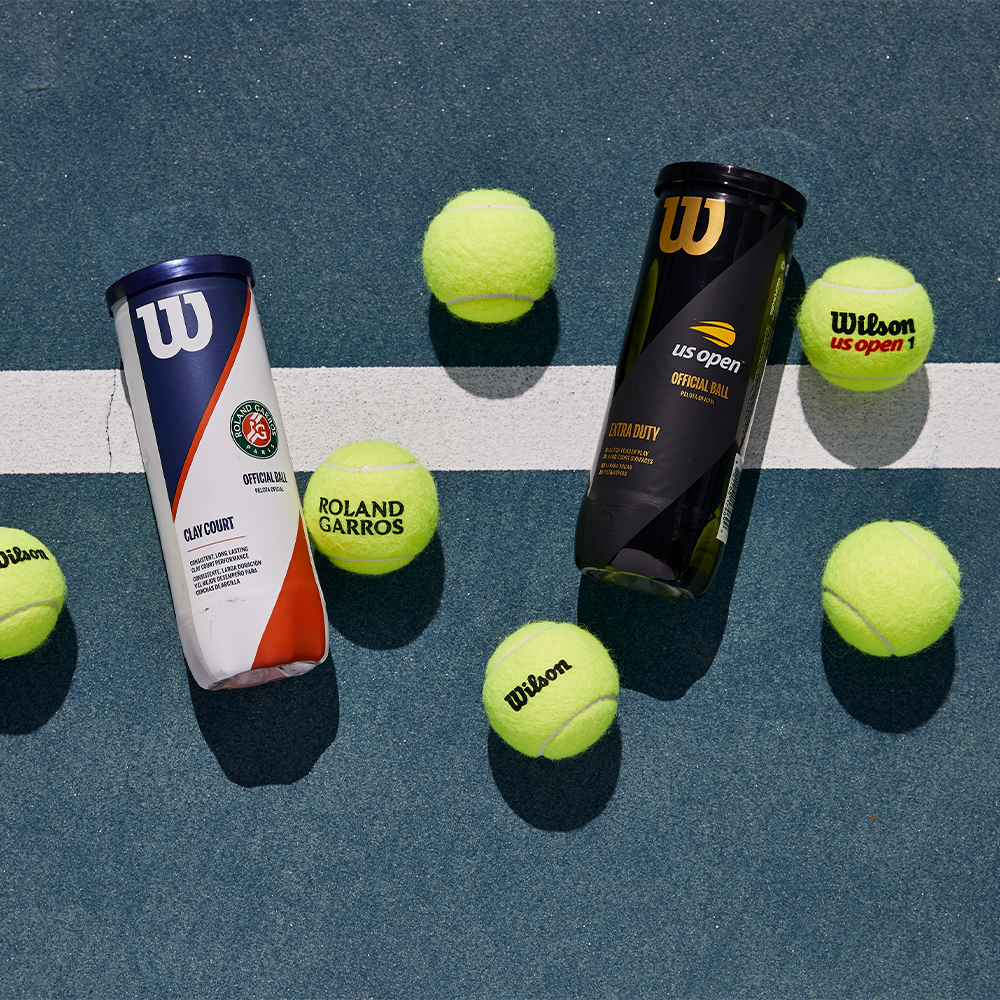In this article, we’ll cover what are the differences between each type of tennis ball and how to pick the right one for you.
Junior Balls
To know which type of junior ball is right for your child and how companies classify them, it will depend on the dimension of the court used, and to a second degree age.
Red balls, also called QST 36, are the softest, lowest bounce balls that exist, are made for half court play (usually on one side with a mini-net) and represent 25% air compression of a regular adult tennis ball. They’re usually indicated for players 8 & under. There are two types of red balls, one made of felt, which is used outdoors, while the other type, made of foam, is for indoor play. The foam balls are slightly bigger, but both have the same “compression” level.
Orange balls (also called QST60) represent 50% of air compression compared to an adult ball and are made for ¾ court play. The recommended age for this type of ball is 9 to 10 years old.
Beginner Balls
Green Dot tennis balls are a hybrid between junior and adult balls. They have 75% of a regular adult tennis ball and are made for full court play. The reason they are a hybrid ball is because they can also be used by adult beginners, since the ball has enough bounce for full court play but its lower compression makes it slower and doesn’t bounce as high, making it much easier to hit it at the right height.
Extra-Duty vs Regular Duty : Hard Court Balls vs. Clay Balls
- In adult tennis balls, you will usually find two types of cans for the same ball : Extra Duty and Regular Duty, which refers to the felt on the balls. In short, the Extra Duty felt is made for hard court surfaces, while Regular Duty felt is for soft surfaces, mostly clay courts. The difference is in the thickness of the felt ; Extra Duty balls have a thicker felt, while Regular Duty has thin felt, as both are adapted to their surface with specific factors, but above all they’re made to level the speed of the ball based on the surface played so it’s relatively standard when switching courts. Since hard court is a faster surface and clay court is a slower surface, the difference in thickness makes a ball either slower or faster, so that there is not too much of a difference in playing speed. While you can play on the opposite surface the ball is made for, there are inconvenients :
- Regular Duty will wear out much faster when played on hard court as their thin felt isn’t made for the abrasiveness of a hard court. They will also play much faster and bounce more.
- Extra Duty will get heavy on clay courts as most of them are hosed and kept humid, so that water goes into the ball and the felt keeps some of it. The thicker felt also picks up particles of clay/sand which can potentially damage strings, especially soft ones like natural gut.
Now, regardless of the type of felt, ball companies will have two levels of ball quality, the recreational balls and the tournament balls. The main difference between these two levels and the price associated with them lies on the quality assurance : the higher the price, the better the QA is on those balls, meaning with the tournament balls, they will all bounce perfectly, without imperfections, as they’re suited to be used by all competitive levels, including professionals. In the recreational balls, you may find some (although usually very minor) imperfections in the ball, even though they still run through some QA.
Recreational Balls : this level is made for amateurs and casual players who simply need a ball that bounces correctly. They’re usually called “Championship” by the companies, and you can find them in different colours such as orange or pink. Here’s a few examples :
- Wilson Championship
- Penn Championship
- Dunlop Championship
- Babolat Gold Championship
Tournament Balls : this level is for everyone who wants a high quality ball with constant performance and durability. Here you will find the same balls used in all tournaments from local leagues to the Tour. Here’s a few examples :
- Wilson US Open
- Pro Penn Marathon
- Penn Tour
- Dunlop ATP
- Dunlop Australian Open
Depressurized balls : A separate category, the main advantage of this type of ball is its long lasting life, since they can’t lose pressure i.e. their bounce. Instead, the ball contains a harder type of rubber to replicate the one from a pressurized ball, but the big downside of this is a feeling much harder on impact. This type of balls is made with coaching in mind, due to their longevity, and are also often used for ball machines. Here are examples :
- Wilson Triniti
- Babolat Academy
FAQ
How long can I keep my balls in storage?
- It depends on if the ball are still pressurized in their tubes ; in this case, they have a long shelf life of 2+ years, this number being dependent on being kept in a room temperature room without big shifts in temperature.
- If the cans are open, a ball will lose its pressure gradually over time, and will have lost enough pressure after two weeks to not be considered in good condition anymore.
Why is there a price difference between large-scale retail stores and sports generalists vs speciality tennis retailers regarding balls?
- The majority of large-scale stores exclusively sell "low price" balls which are aimed primarily at occasional recreational players. These balls are subject to much less rigorous quality controls than balls typically sold at specialty retailers. They are therefore for the most part less durable and also more likely to show manufacturing defects that the casual player may not notice but which the more seasoned player will quickly notice.
Do pro women use clay balls on hard court?
- Yes, but only at the US Open specifically, all other hard court tournaments use Extra Duty for both men and women.

